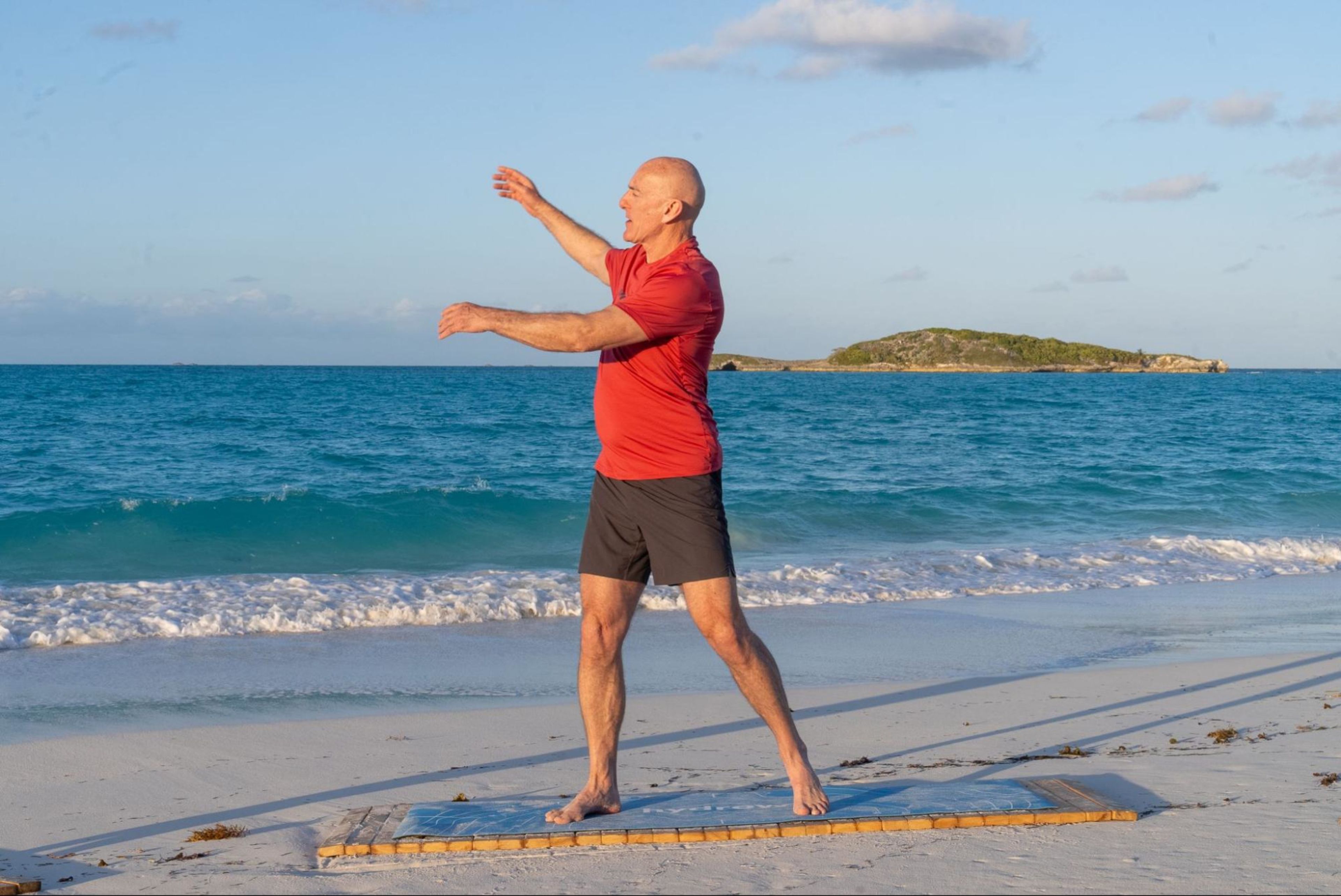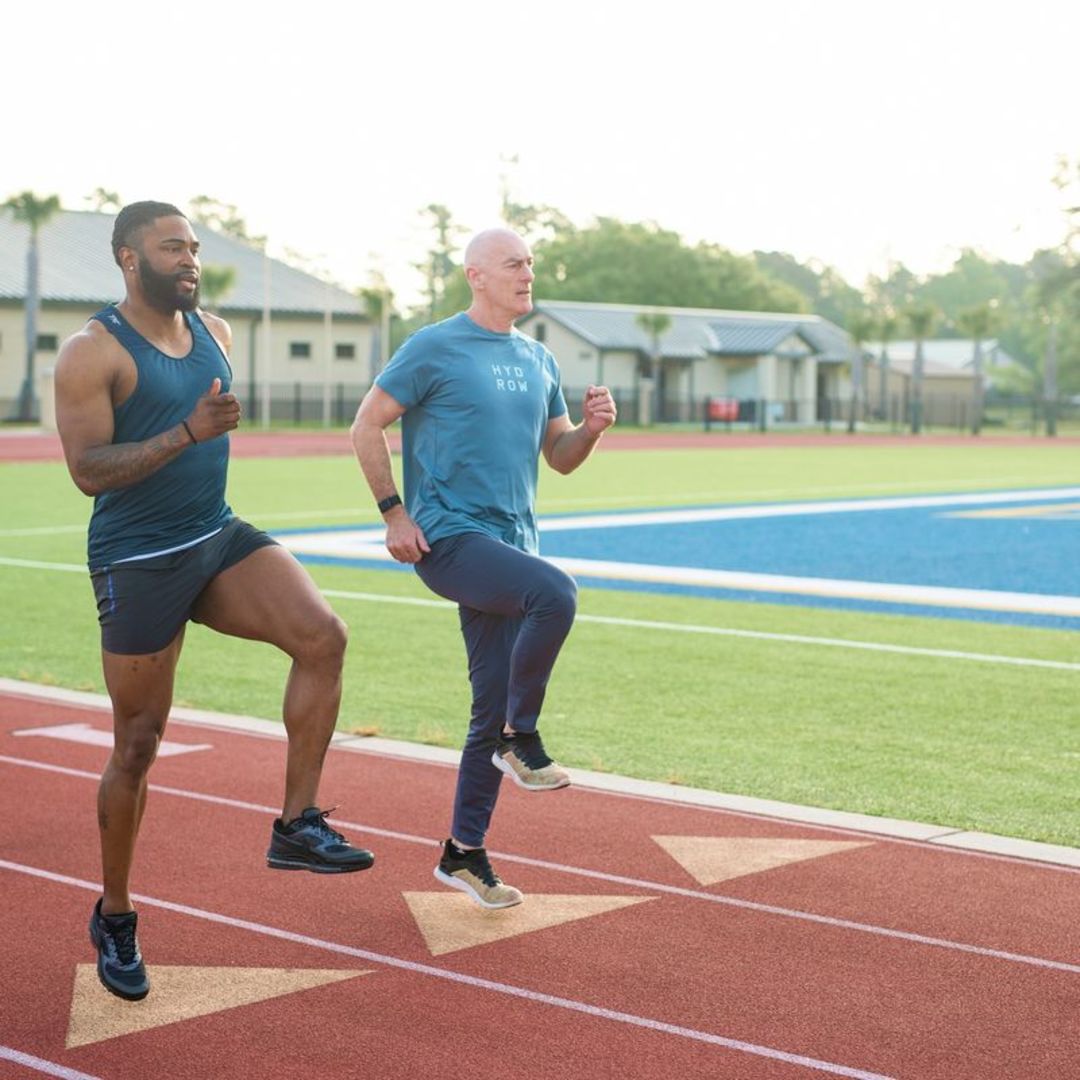What Is Mobility Training? How to Elevate Your Fitness with Enhanced Movement

In the quest for optimal fitness, many people gravitate toward weightlifting, cardio routines, and high-intensity interval training (HIIT). While these components are undeniably important, there is another aspect of physical health that often flies under the radar: mobility training.
If you’re not yet acquainted with this vital element of fitness, now is the perfect time to dive in. In this blog, we’ll provide a thorough explanation of mobility training, highlighting its significance, distinguishing it from flexibility, and demonstrating how it can enhance your overall fitness regimen. Learn about:
Let’s get started!
What is mobility training?
Mobility training refers to exercises and techniques designed to improve the range of motion and functional movement of your joints. Unlike static stretching or isolated strength exercises, mobility training focuses on enhancing the quality of movement through various dynamic and controlled motions. It integrates muscle strength, joint integrity, and neural control, making it a holistic approach to achieving optimal movement efficiency.
In simpler terms, mobility training helps you move more freely and effectively, reducing your risk of injury and improving overall performance in daily activities and workouts. It’s about preparing your body to handle complex movements and ensuring your joints and muscles work harmoniously together.
Why is mobility training important?
Injury prevention: One of the most compelling reasons to incorporate mobility training is its role in injury prevention. Improved joint mobility can reduce strain on surrounding muscles and connective tissues, lessening the risk of overuse injuries or acute strains. For example, adequate hip mobility can prevent lower-back pain by reducing excessive stress on the lumbar spine during movements.
Enhanced performance: Mobility training contributes to better performance in various physical activities. Whether you’re an athlete, a weekend warrior, or someone who enjoys recreational sports, optimal mobility allows for more efficient and powerful movements. For instance, a well-mobilized shoulder joint can enhance your overhead strength and improve your form in exercises like bench presses and overhead squats.
Better posture and alignment: Regular mobility work helps maintain proper posture and alignment. Poor posture can lead to misalignment and muscular imbalances, which in turn can cause pain and functional limitations. Mobility exercises can address these issues by improving joint alignment and muscular balance.
Improved daily functionality: Beyond the gym or sports setting, mobility training enhances everyday activities. Simple tasks like bending down to pick something up, reaching for objects on high shelves, or sitting comfortably for extended periods can become easier and more comfortable with improved joint mobility.

Did you know?
Over 90% of Hydrow members are still active one year later.
Mobility vs. flexibility: What’s the difference?
It’s common to hear the terms “mobility” and “flexibility” used interchangeably, but they represent distinct concepts in the realm of physical fitness.
Flexibility refers to the ability of a muscle or muscle group to lengthen passively through a range of motion. It’s typically measured in terms of how far a muscle can stretch. Flexibility exercises often involve static stretching, where you hold a stretch for an extended period to lengthen the muscle fibers.
Mobility, on the other hand, is a more comprehensive concept that includes not only the range of motion of a joint but also the ability to control that movement actively. Mobility combines joint movement with muscle strength, coordination, and stability. While flexibility is a component of mobility, mobility training encompasses a broader range of techniques aimed at improving functional movement.
To illustrate this distinction, consider the example of a deep squat. Flexibility alone might allow you to lower your body into a deep squat position, but without adequate mobility, you may struggle to maintain balance and control throughout the movement. Mobility training ensures that you not only have the flexibility to get into the position but also the strength and coordination to perform the movement effectively and safely.
5 common mobility training techniques to enhance your movement
1. Dynamic stretching
Dynamic stretching involves actively moving parts of your body through their full range of motion. Unlike static stretching, which involves holding a stretch for a prolonged period, dynamic stretching is performed with controlled movements and is often used as a warm-up before exercise.
The benefits of dynamic stretching
Dynamic stretching increases blood flow, warms up the muscles, and improves joint mobility. It prepares your body for physical activity and exercise by enhancing range of motion and reducing stiffness.
Examples of dynamic stretching
Leg swings: Swing one leg forward and backward while standing on the other leg. This helps to loosen up the hip joints and improve flexibility in the hamstrings and hip flexors.
Arm circles: Extend your arms out to the sides and make small, controlled circles, gradually increasing the size of the circles. This technique warms up the shoulder joints and increases blood flow to the area.
2. Foam rolling (self-myofascial release)
Foam rolling is a technique that uses a foam roller to apply pressure to specific areas of the body, targeting tight muscles and fascia (the connective tissue surrounding muscles). This technique is known as self-myofascial release (SMR) and helps to alleviate muscle tension and improve mobility.
The benefits of foam rolling
Foam rolling helps to release muscle knots, increase blood flow, and improve the elasticity of the fascia. It can lead to better overall mobility, reduced muscle soreness, and enhanced recovery.
Examples of foam rolling
Calf roll: Place the foam roller under your calves and roll slowly from the ankles to the knees, applying pressure to tight spots.
IT band roll: Position the foam roller on the outer thigh and roll from the hip to just above the knee, targeting the iliotibial (IT) band.

What’s your workout style?
Take our quiz and get a customized 14-day training program.
3. Joint mobilizations
Joint mobilizations are specific movements designed to increase the range of motion and function of a particular joint. These exercises involve moving the joint through its available range of motion in a controlled manner, often with the assistance of external forces like bands or weights.
The benefits of joint mobilizations
Joint mobilizations increase the flexibility and function of the joints, enhance overall movement patterns, and can help address specific joint restrictions or discomfort.
Examples of joint mobilizations
Hip circles: Perform hip circles by standing on one leg and moving the other leg in a circular motion. This technique helps to mobilize the hip joint and improve its range of motion.
Shoulder circles: Hold a resistance band or stick with a wide grip and slowly move it over your head and behind your back to improve shoulder joint mobility.
4. Controlled Articular Rotations (CARs)
Controlled Articular Rotations (CARs) are exercises that focus on moving a joint through its full range of motion while maintaining control and stability. CARs emphasize slow, deliberate movements to improve joint mobility and control.
The benefits of Controlled Articular Rotations
CARs help to enhance joint mobility, improve control and stability, and prevent stiffness. By focusing on controlled movements, CARs also help to increase awareness of joint function and potential restrictions.
Examples of Controlled Articular Rotations
Hip CARs: While on your hands and knees, move your hip through a full circular motion, ensuring controlled and smooth movement throughout.
Shoulder CARs: With your arm extended, perform a circular motion with your shoulder, keeping the movement slow and controlled
5. Static stretching (post-exercise)
Static stretching involves holding a stretch for an extended period, usually 15 to 60 seconds, to lengthen the muscles and improve flexibility. While it is often used post-exercise, it can also be beneficial as part of a mobility routine.
The benefits of static stretching
Static stretching improves muscle flexibility and joint range of motion, enhances overall muscle relaxation, and aids in post-exercise recovery. It is particularly useful for lengthening muscles and improving flexibility after physical activity.
Examples of static stretching
Hamstring stretch: Sit with one leg extended and reach toward the toes of the extended leg, holding the stretch to target the hamstrings.
Chest stretch: Stand in a doorway with your arms extended and lean forward to stretch the chest and shoulders.
Getting started with mobility training
Incorporating these mobility training techniques into your fitness routine can greatly enhance your movement quality, reduce the risk of injury, and improve overall performance. Each technique offers unique benefits, and a well-rounded approach that includes dynamic stretching, foam rolling, joint mobilizations, CARs, and static stretching can provide a comprehensive boost to your mobility and functional movement. As always, it's important to perform these exercises with proper form and gradually progress to ensure optimal results and prevent injury.
If you’re looking for more mobility training exercises to try, be sure to check out Hydrow. Our mobility workouts are designed to keep your joints healthy, improve flexibility, and support recovery, so you can move with ease. Guided by world-class Athletes, each session helps you build lasting strength and resilience with low-impact, effective movements.
Add mobility to your routine and experience the difference with Hydrow.

Explore Hydrow’s library of 5,000+ rowing, circuit training, yoga, Pilates, and mobility workouts.





